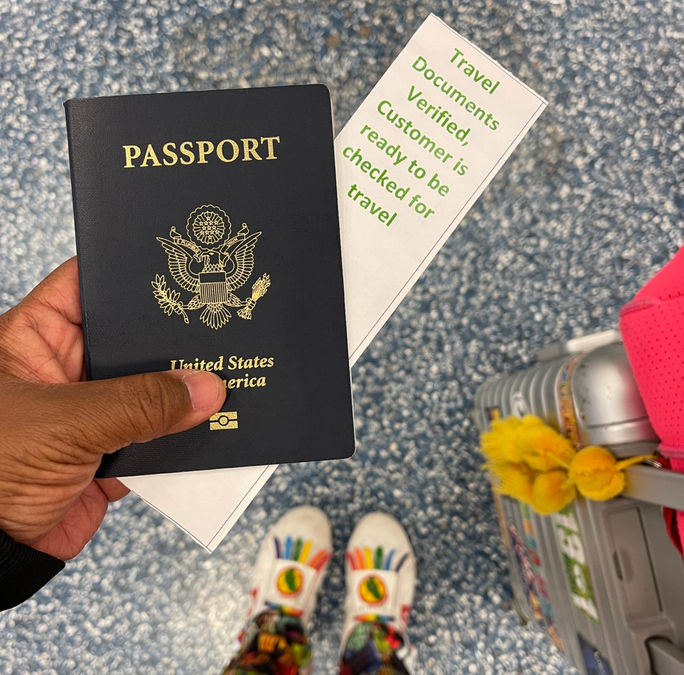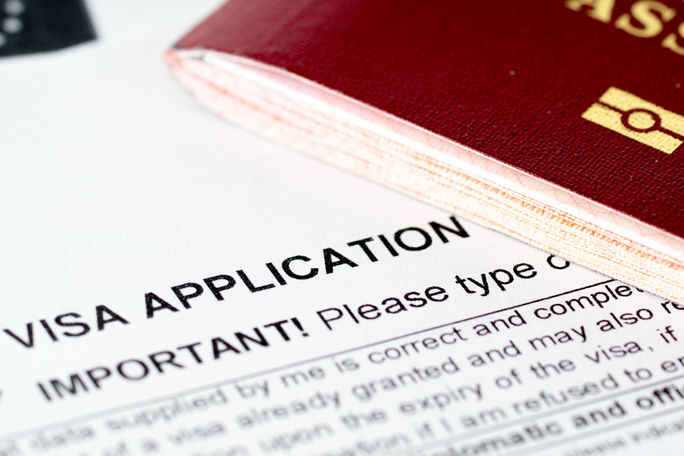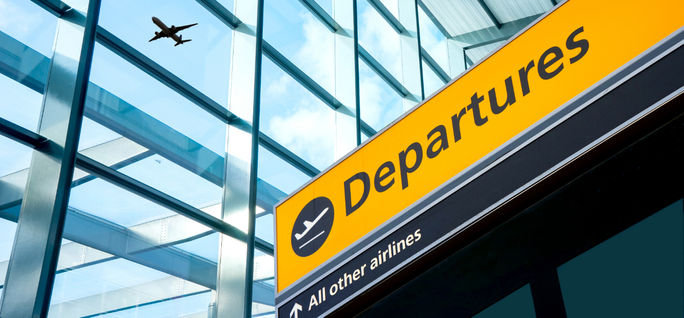
With a new summer high season in Europe about to begin, now is the perfect time to refresh your European travel basics. Nothing is more fundamental to your international travel experience than entry requirements.
Over the past few years, there’s been a constant stream of news about changes to entry requirements, visas, and fees across the continent, many of which are pandemic-related but which highlight a larger truth that’s often forgotten: It’s not as simple as hopping on a plane and going there.
Whether you’re a travel advisor with clients heading to Europe or a traveler reading this article while waiting for your ride to the airport, make sure you’re up to date on the following travel regulations and restrictions before crossing the Atlantic.

Flags of different European countries are scattered across a map of the region. (Adobe Stock/Maksym Yemelyanov)
Welcome to Schengen
Before we go into detail about European entry requirements, we need to talk about Schengen. If you’re not yet familiar with Schengen, now is a good time to change your knowledge, as we’ll be covering it a lot in this article and it will be in the news a lot in 2025.
Basic info: The Schengen Area is a travel area that encompasses 29 European countries, essentially making the borders between those countries meaningless from a travel perspective. The area was created by the Schengen Agreement in 1985 and strengthened by the Schengen Treaty in 1990, and changed travel in Europe forever.
So the fact that you can now hop on a train in Germany, travel through the Austrian Alps and arrive in Italy without your passport being checked is thanks to the Schengen Agreement and the Schengen Area it created, which is a huge selling point for travelling in Europe in general.
It’s important to remember that the Schengen travel zone, while similar, is entirely different from the European Union. Of the 27 EU member states, 25 are included in the Schengen Area, while Cyprus and Ireland remain outside. Incidentally, Cyprus is expected to join Schengen at some point, while Ireland plans to maintain its current separate entry policy for the time being.
The zone includes 25 EU member states, as well as four non-EU member states: Iceland, Liechtenstein, Norway and Switzerland. Micronations such as Andorra, Monaco, San Marino and the Vatican City are also de facto members because they have border agreements with Spain, France and Italy.
Besides Ireland and Cyprus, other major territories not included in the Schengen Area include the UK, Turkey, Bosnia and Herzegovina, Serbia, Montenegro, North Macedonia and Albania.
Simply put, the Schengen Area is a giant travel zone that allows all 29 countries to be treated as “one country” from a passport entry perspective.

Passports and verified travel documents. (Photo by Sarah Greaves-Gabadon)
Passport details
Speaking of passports, it’s probably not that surprising that you’ll need one to enter Europe, so be sure to apply for one well before traveling, as wait times can be unpredictable.
But it’s not as simple as remembering what to pack, so here are some important requirements to know when traveling to Europe.
Your passport must be valid for the entire duration of your stay in Europe.
In some cases, you may need more time – for example, if you are entering the Schengen area, your passport must be valid for at least three months beyond the duration of your trip.
Yes, you need a three month buffer even if you’re only staying in Schengen for two weeks (the maximum stay is 90 days). So, for example, if your passport expires on December 31st, you can’t travel for two weeks in October, even if you have plenty of time left on your passport. This also means that if you plan to stay in Schengen for the full 90 days allowed, you need to enter with six months left on your passport.
This is particularly significant given that adult passports are valid for 10 years, while passports for children under 16 are valid for just five years.
If you’re working with a travel advisor (and you should!), they’ll be more likely to be able to spot potential passport pitfalls. If not, double-check your travel dates and passport expiration dates.
For non-Schengen countries such as the UK, Ireland and the Balkans, a validity period for the duration of your stay is usually sufficient (this can vary from 90 days to 6 months depending on the country), but be sure to check. Note that Turkey requires a 6-month validity upon entry.
But soon, even if you turn up unannounced with a passport well past its expiry date, you will no longer be allowed into the Schengen area – this is because of ETIAS.

European Union Visa Application (Photo: MasterSergeant/Adobe Stock)
Current status of ETIAS
While it may sound like a dreamy Greek island, ETIAS is the name of a new requirement that Americans (and many others) will soon have to meet to visit most countries in Europe.
While it won’t affect travelers until 2024, once it’s up and running, ETIAS will be a crucial part of European travel, so it doesn’t hurt to get familiar with it now.
ETIAS stands for European Travel Information and Authorization System, and it has been in the works for almost a decade. The system was due to be introduced this year but has been delayed again, this time to 2025. Once ETIAS is finally implemented, Americans (and many others) will no longer have the luxury of relying solely on their passport to visit Europe, and will need pre-approval to enter the Schengen Area and Cyprus.
Approval will come in the form of an approved ETIAS application. The process is expected to unfold similarly to the ESTA process that visitors to the US have been using for some time now, meaning it will be completed online and will only take a few minutes.
The ETIAS application costs €7 ($7.48) for individuals aged 18 to 70, but is free for all other age groups and for family members of EU citizens. Once approved, the ETIAS permit will be valid for three years.
As with the Schengen Area, you won’t need an ETIAS to visit Ireland, the UK and many other countries, but you should know that a similar system is in the works for the UK.
Again, this is not yet required, but is planned.

Departure sign at Heathrow Airport in London. (Photo by alice_photo / Adobe Stock)
Return to sender
While this may not apply to many people, be aware that you may need to show proof of a return flight when entering other European countries such as Schengen countries, Ireland or the UK.
If there are no return flights available and you planned to just go with the flow, some border officers may ask you to show proof of funds to purchase a return flight.

Rialto Bridge over the Grand Canal in Venice.
The Venice Experiment
You’ve arrived in Europe, your passport is still valid, and you’re ready to enjoy wherever you go, right? This is true for 99.9 percent of the continent, with one big exception: Venice.
Venice recently became the first city in the world to impose restrictions on day-trippers, implementing a new 5 euro (about $5.34) “access fee” on certain days in 2024.
If you stay overnight, the fee will be waived, but you will need to download and carry a code to prove your exemption.
Will this practice spread across the continent? Something similar is already being talked about in Lake Como, and no doubt many tourist destinations are keeping an eye on what happens in Venice.
Subscribe to the daily TravelPulse newsletter for the latest travel news, updates and deals.

